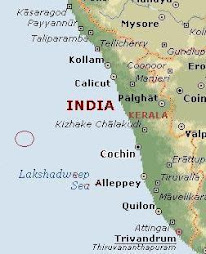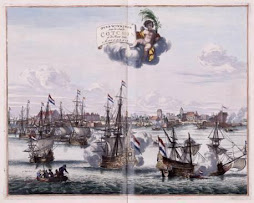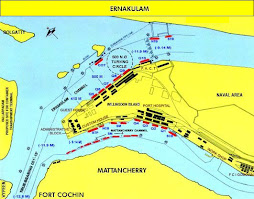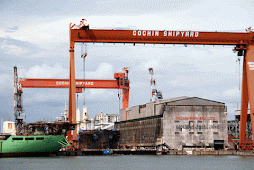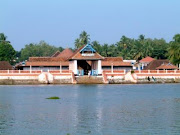(V.M.
Syam Kumar, Advocate, High Court of Kerala)
In
what could be termed as a magnum opus on the case law relating to marine
pollution in India, Justice Swatanter Kumar former judge of the Supreme court
of India and the Chairperson of the National Green Tribunal has recently rendered
a judgment holding that “No party
from any country in the world has the right/privilege to sail an unseaworthy
ship to the Contiguous and Exclusive Economic Zone of India and in any event to
dump the same in such waters, causing marine pollution, damage or degradation
thereof.”
The
erudite judgment was the culmination of a litigation initiated by a citizen inter alia seeking to make the Owner of a
vessel and its charterer liable for the damage caused to the ecosystem and pay
compensation of the loss to ecology and livelihood in accordance with the ‘Polluter
Pays Principle’.
M.V. RAK was carrying coal for and on behalf of an
Indian Company. The Ship was carrying more than 60054 MT coal in its holds. The
Ship contained 290 tonnes of fuel oil and 50 tonnes of diesel. Its voyage was
from Indonesia to Dahej. On its voyage to destination, the ship sank
approximately 20 Nautical Miles from the coast of South Mumbai. There was an
oil spill in August, 2011 which occurred in the Arabian Sea, off the coast of Mumbai
due to the sinking of the ship. The spilled oil from the ship spread beyond
Mumbai to Raigad District. Traces were noticed particularly between Uttan in
Bhayandar and Gorai beach. Continuous trail of oil leak from the ship was observed
upto 12 Nautical Miles. A very thick oil slick up to one nautical mile and a thick
layer of oil upto two Nautical Miles was also observed. During the first few
days, oil was leaking at the rate of 1–2 tonnes per hour and on August 12, 2011
according to the Applicant, the rate of oil spill was 7 to 8 tonnes per day as
per the information of the Coast Guard. Press Information Bureau Report and the
press release of the MoEF & CC indicated said statistics. It is reiterated
that the ship was carrying more than 60000 MT of coal for Adani Enterprises
Limited for its thermal power plant at Dahej in Gujarat. As a result of the oil
spill, there has been damage to mangroves and marine ecology of the Bombay
coast. Various press information and articles were published in the newspapers
during August, 2011 and particularly from 8thto 12thAugust, 2011. The impact of
the oil spill has been clearly noticed and is visible on the mangroves of
Mumbai. The lower portion of mangroves at Bandra had turned dark because of a
layer of oil and got destroyed. The Government had also taken the view that the
oil seen at Juhu Beach is due to localized events and not due to oil spill, but
this was a misconception. Other accidents of oil leak from other ships had also
taken place in 2010 near Uran.
In a detailed judgment the Tribunal examined
various national and international legal norms on marine pollution including crucial
questions on coastal state’s jurisdiction over its adjacent maritime zones and came
down heavily on the polluters.
On the facts of the case it was held that “It is
not a case of sinking of a ship by accident simpliciter, but it is a case where
element of mens rea can be traced from the unfolding of the events that finally
led to the sinking of the ship on 4thAugust, 2011. Non-rendering of requisite
help/assistance by Respondent no.5 and other persons interested and
responsible, to the Master of the Ship, despite the fact that they had complete
knowledge about the status of the ship prior to the occurrence of the incident
on 4thAugust, 2011. Furthermore, these Respondents did not adhere to the
Principle of Due Diligence pre-voyage, for which they had sufficient means and time.
The ship had developed mechanical and technical snags at Colombo and Singapore
and the Master of the ship had asked for help there during its onward journey.
There is nothing on record to show that Respondent no.5 and other Respondents provided
timely assistance to the Master of the ship. It is also on record that there were
repeated requests for help and for stoppage of the voyage in the meanwhile.
During the entire duration, the owners and the other Respondents directed the
ship to continue with its voyage, even though one of the pumps and a generator of
the Ship had been rendered non-functional. This is really a case where the
doctrine of res ipsa loquitor comes completely
into play and the events speak for themselves to the extent that it hardly
requires any further evidence to establish the element of negligence,
carelessness and ill-design for sinking of the ship with the cargo itself.”
The Tribunal further held that the reports on
record exhibit the callous attitude of the persons interested in the ship
towards its seaworthiness and safe voyage to Dahej in Gujarat.
It was held that the pollution is not limited to an
individual or a singular item. It is a problem of multiple sources of
pollution, resulting from oil spill, sinking of the ship and its cargo. It will
affect the marine environment that includes sea water, quatic life, shore,
seabed, mangroves, tourism and public life of the people living at the shore. The
adverse impacts were not seen only at a singular point but at multiple beaches
as afore-stated.
Pinning down those directly responsible for marine
pollution, the Tribunal held that “We
have discussed in great detail all concepts of this case and have held that Respondents
no.5, 7 and 11 are liable for all the degradation, damage and pollution of
marine environment and the consequences of the defaults in not complying with
the Conventions and the law in force in the Indian Waters (Contiguous Zone).
While Respondent no.6, who had chartered the ship is responsible and liable for
damage and pollution resulting from the cargo, for which, despite the fact that
years have gone by, it has made no effort either to remove the cargo or even
take the minutest preventive or pre-cautionary measures for controlling and
preventing pollution of marine environment.”
“The damage caused by pollution, cannot be computed
in terms of money with exactitude and precision. This has to be on the basis of
some hypothesizing or guess work as is necessary to be applied in such cases.
For instance, the damage caused to the aquatic life, mangroves, sea shore and
tourism are incapable of being computed exactly in terms of money. The
mangroves were destroyed as a consequence of the oil spill. The quantum of
leakage of oil during the first few days, was at the rate of 1–2 tonnes per
hour and on August 12, 2011 according to the Applicant, the rate of oil spill
was 7 to 8 tonnes per day as per the information of the Coast Guard. It shows the
massive oil spill from the ship. Thereafter the ship has been lying at the
present location (20 Nautical Miles from the baseline of the Mumbai shore). The
ship itself has dead weight 63695 with a cargo of 60054 MT and with all other
metallic and non-metallic substance such as asbestos, machines, oil, grease and
other elements including the coal as cargo of the sunken ship.”
Evoking the ‘Precautionary Principle’ in light of
the facts of the present case, the Tribunal held that the Owners and the Charterers
have completely ignored this principle
and did not take due precautions at the appropriate time. Even after the
accident, none of them have taken any steps to remedy the wrong since they are
content with the dumping of the ship along with its cargo in Indian waters as
they have not suffered any liability in that regard.” This is a patent and flagrant violation of the
Precautionary Principle. Serious pollution has been caused by the oil spill and
by the sinking of the ship and the cargo. The environment as already noticed
under the Indian jurisprudence has been given a very wide meaning and
practically covers whatever one can think the term may include.
The judgment rendered by Justice Swatanter Kumar is
an important milestone in the evolution of marine pollution law in India. Finally
Indian legal system has a judgment albeit from a Tribunal, laying down the
basic tenets of marine pollution jurisprudence. This judgment will serve as a
beacon for further legal decisions on marine pollution.
The Judgment of the National Green Tribunal can be read
here:



